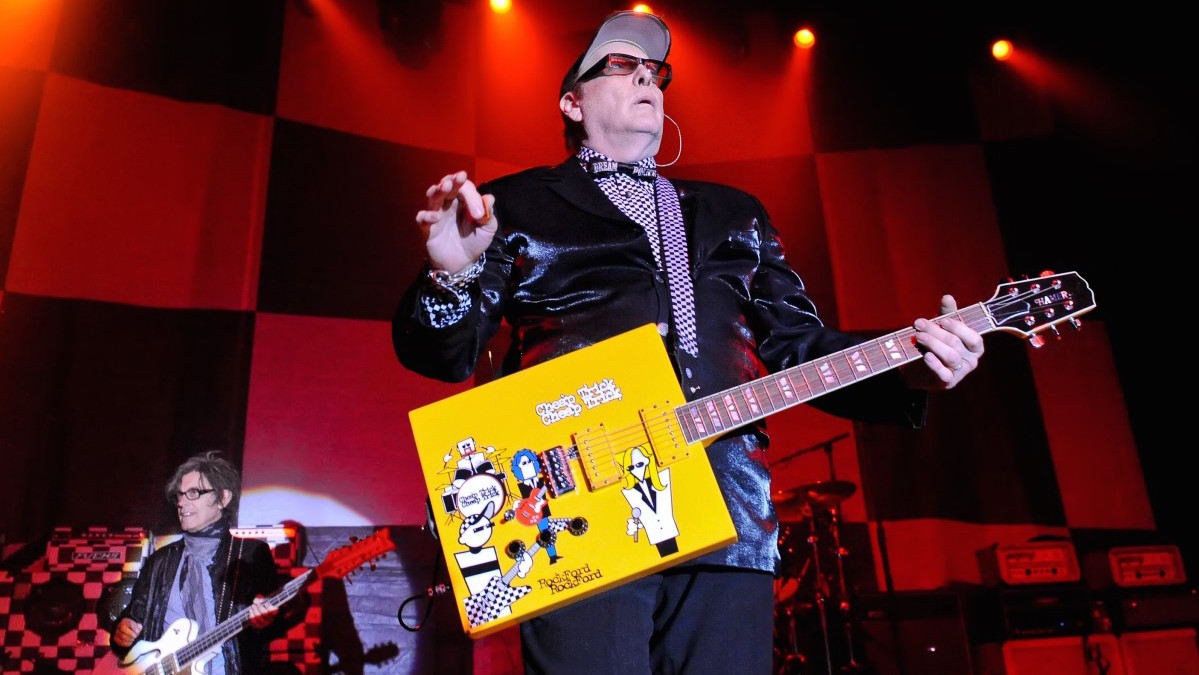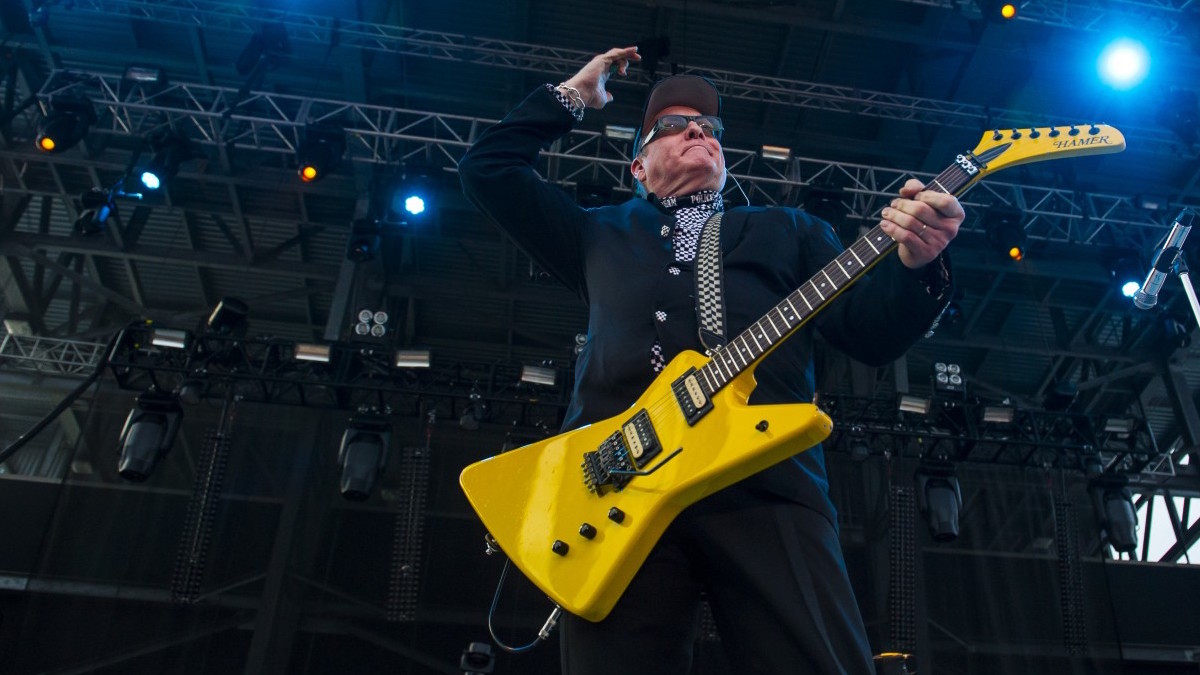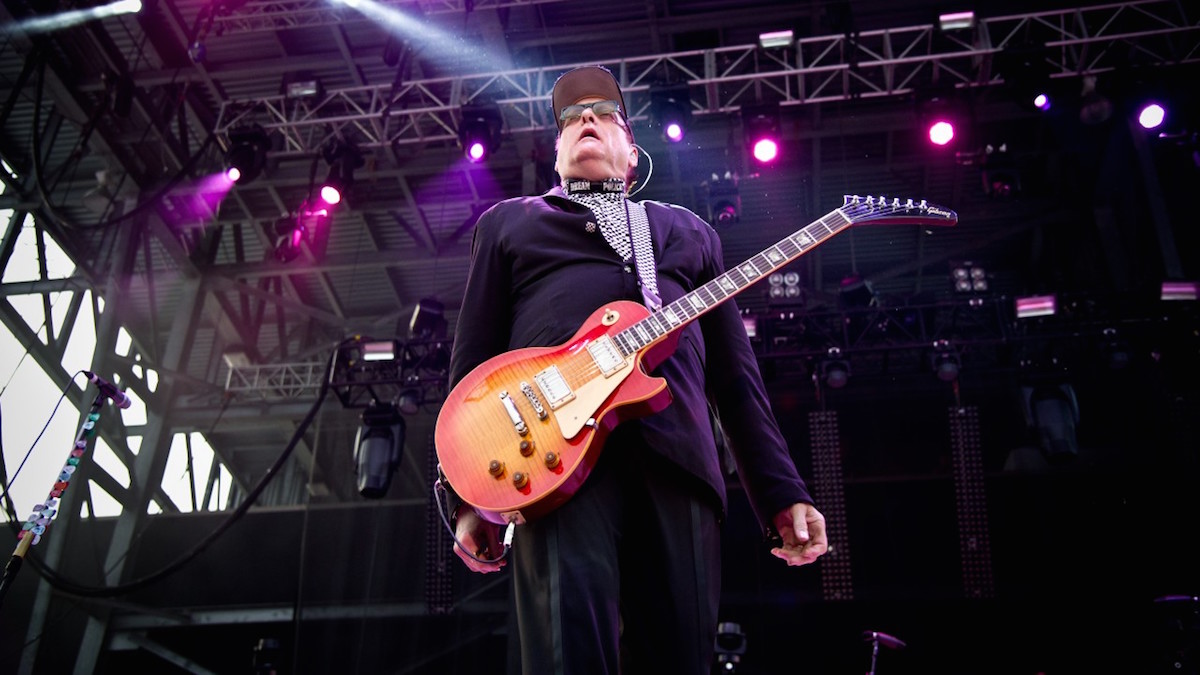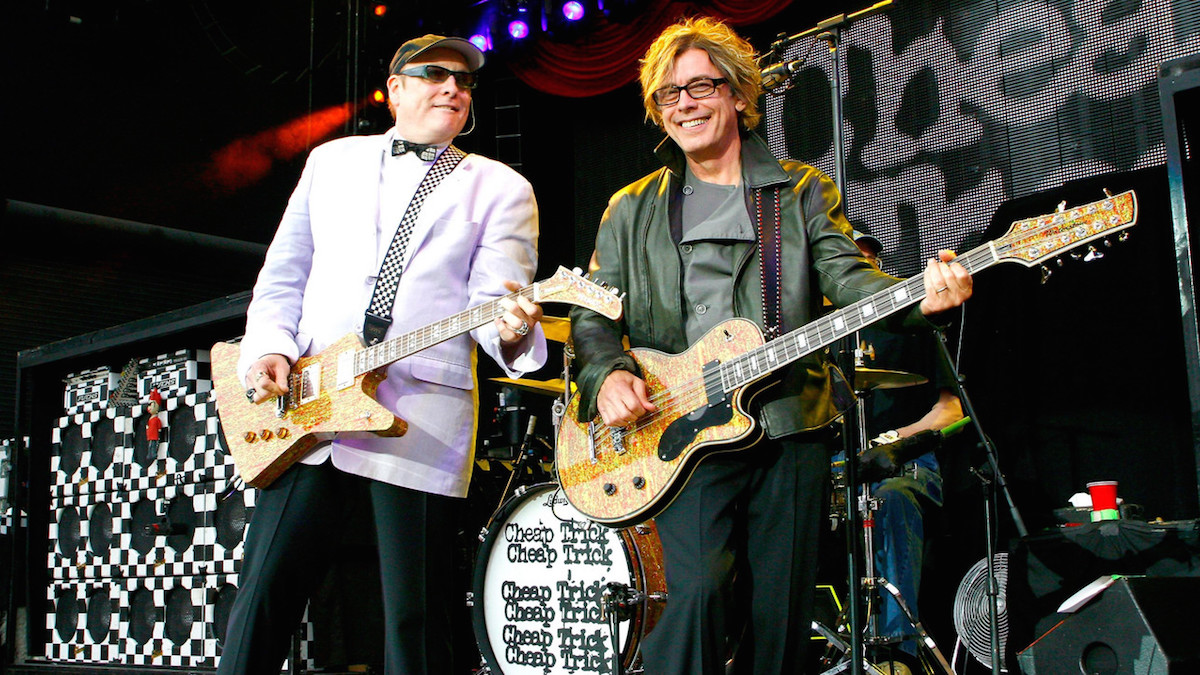Cheap Trick's Rick Nielsen: my top 5 tips for guitarists
Legendary guitarist and songwriter shares his wisdom

Rick Nielsen's top five tips for guitarists
It's fair to say that April is a pretty huge month for Cheap Trick. As guitarist Rick Nielsen explains, the band's new record Bang Zoom Crazy... Hello drops on 1 April, a date that is also marked in the state of Illinois as Cheap Trick Day. Not just that, but there's the little matter of the band being inducted into the Rock and Roll Hall of Fame later in the month.
“It's a real honour," Nielsen says of the Hall of Fame induction. "I'm looking forward to it, but I'm also looking forward to it being over. It's nerve-wracking. Nobody wants to hear long speeches.
“It's like doing an interview: 'Here, you've had your career for the last 50 years; now in one paragraph tell us what it was all about.' Where do I start! We're in good company with Deep Purple, Steve Miller and NWA, how about that!”
The induction couldn't have come at a better time: Bang Zoom Crazy... Hello is a rock-solid, hit-laden record that proves beyond doubt that Cheap Trick are worthy of their place alongside the great and good of rock 'n' roll (and Madonna) in the Hall.
We always record with the whole band. That's key to capturing the feel
“We went to LA to East West Studio and we did eight songs and then we went back on tour,” Rick tells us of the new album's origins.
“Then we went back in the studio and did another eight songs. Then we went back on tour and then went to Nashville and did another seven songs. We ended up with about 30 songs, and from that we culled it down to 11 for the record. We have enough material for a good start for the next record, as well.”
It's a record that captures the Trick's live wire energy, which isn't entirely surprising given that the rock icons favour recording live in the studio.
“We always record with the whole band. That's key to capturing the feel, especially trying to get a good basic track. If you just go in and fluff through the chord progression then you might find out it sounds weak later. We try to give it as much power as we can as we go.”
As always, there's certainly plenty of power in Rick's guitar tone – one borne of tried-and-trusted gear.
I never use any pedals… except for in my car
“In 1977, I had Paul Rivera hotrod six Fender Deluxes for me. At that time, a lot of studio guys in LA were using those, not so much live guys but studio guys. They had terrific tone and great technique and I was like, 'Well, I like having terrific tone even though I don't have any technique.'
“I had six of those made, and I still use those to this day. He hot-rodded them and I just run those. I always use my Les Paul, I have a Hamer as well, I use a Tele and an Esquire – once in a while I will use a Strat, and I never use any pedals… except for in my car.”
As Rick prepared for the release of Bang Zoom Crazy... Hello we grilled him on his top tips for guitarists, and here are the wise words that he had to share.
Bang Zoom Crazy… Hello is released on 1 April via Big Machine Records.
Don't Miss
Cheap Trick's Rick Nielsen picks 10 essential guitar albums

1. Work on the basics
"Practise, practise, practise, practise and then my fifth tip is practise, as well. You need to put the hours in to get the rewards.
"You need to know the basics. I've played with a lot of different people. I've played with Bo Diddley, Chuck Berry, Les Paul, and I've learned that you've got to have the basics down.
"It's like a guy that wanted to play drums telling me he wanted to play like the guy in Metallica or Pantera, and it's like, 'Go listen to Charlie Watts and Phil Rudd first.' You need to play for an hour, and then for the second hour, bring a cymbal in, and then bring in a tom, just play the basics.
"Look at Keith Richards: he plays the basics. Sure, he can play the leads, but it's the basics that are the important thing."

2. Play what you feel
"You need to think about the feel. For me, I think of myself as more of a songwriter rather than a guitar player, so for me the song is what is key. It's not like, 'Okay guys, we've got this song, but just wait until I play this middle guitar part.' No.
"I would be a terrible studio musician, because I honestly can't play the same thing over and over. Even with our own songs, I'm like that. Sometimes I make mistakes that are better than what I should be playing, so I just go by the feel of it.
"That's why when I worked with John Lennon on the song I'm Losing You, while I was playing the solo he was in the booth with Yoko and Jack Douglas, and he looked at Jack and said, 'I wish I'd had him on Cold Turkey; Clapton choked up.' I think he just liked that I wasn't a studio guy; I was playing for the song.
"What a compliment that was. I'm not the best studio musician, but if John Lennon thinks that, who cares what anybody else thinks?"

3. Think about your solos
"When it comes to solos, I always try to somehow incorporate the melody of the song, or a variation of the melody, into the solo.
"I also try to think of the attitude that needs to go with the song, or come up with something that brings a different dimension to the song – maybe that could be a different rhythm.
"The attitude is important: not every song needs to have a flying solo with as many notes as you can; some need a little more depth and some air."

4. Follow your own path
"Nobody ever gave me any advice about what to do other than maybe, 'That stinks.' I try to just be my own barometer. I try to do what I can do, and that doesn't mean that I don't have any goals. I've never been afraid to attempt anything, but at the same time, I play in a rock band with 12 notes and that's enough.
"I always like it when I do some commercial work and someone gives you an idea, like they say, 'Play something cool.' That's all I ever try to do! If someone can give you an idea, maybe they want something slow or fast, 4/4 or whatever, that gives a creative person a destination.
"I wrote the international song for Pepsi and I was up against 70 other writers. I didn't need that job, so I just tried to work with what they gave me and I beat 70 other commercial writers – not because I wanted their job; I just listened to what they said.
"Same thing with the Colbert Report. Stephen Colbert called me about his show and said his character was like our song I Want You To Want Me, so I took the melody and turned it around and that was it. I did what he said: I didn't try to copy what I had done, I went in a new direction and it worked pretty good because it was used on TV for nine years in a row."

5. Play with other musicians... and show them respect
"You should go play with other musicians.
"I knew BB King since 1968 and I played with him - the last time I played with him was about six months before he died - and he would always say, 'Hey Mr Rick.' I never tried to be something that I wasn't; I was never a, 'Hey, wait until you hear what I'm playing.' Everyone else would get up and try to run circles around him, and he could kill you with one note... and he appreciated that I only knew one note! Playing with other people is so important.
"I played with Les Paul a number of times, and I played a couple of his birthday parties. I went there and I followed the leader - I followed him. All of the other guitar players that got up and played were trying to show off; they were all trying to outdo the last guy. Give me a break.
"I think that's why Les Paul liked me, because I wasn't showing off - probably because I couldn't show off! But you need to play behind people when it's not your show. It was an honour to meet and play with Les Paul."
Don't Miss
Cheap Trick's Rick Nielsen picks 10 essential guitar albums
Rich is a teacher, one time Rhythm staff writer and experienced freelance journalist who has interviewed countless revered musicians, engineers, producers and stars for the our world-leading music making portfolio, including such titles as Rhythm, Total Guitar, Guitarist, Guitar World, and MusicRadar. His victims include such luminaries as Ice T, Mark Guilani and Jamie Oliver (the drumming one).
